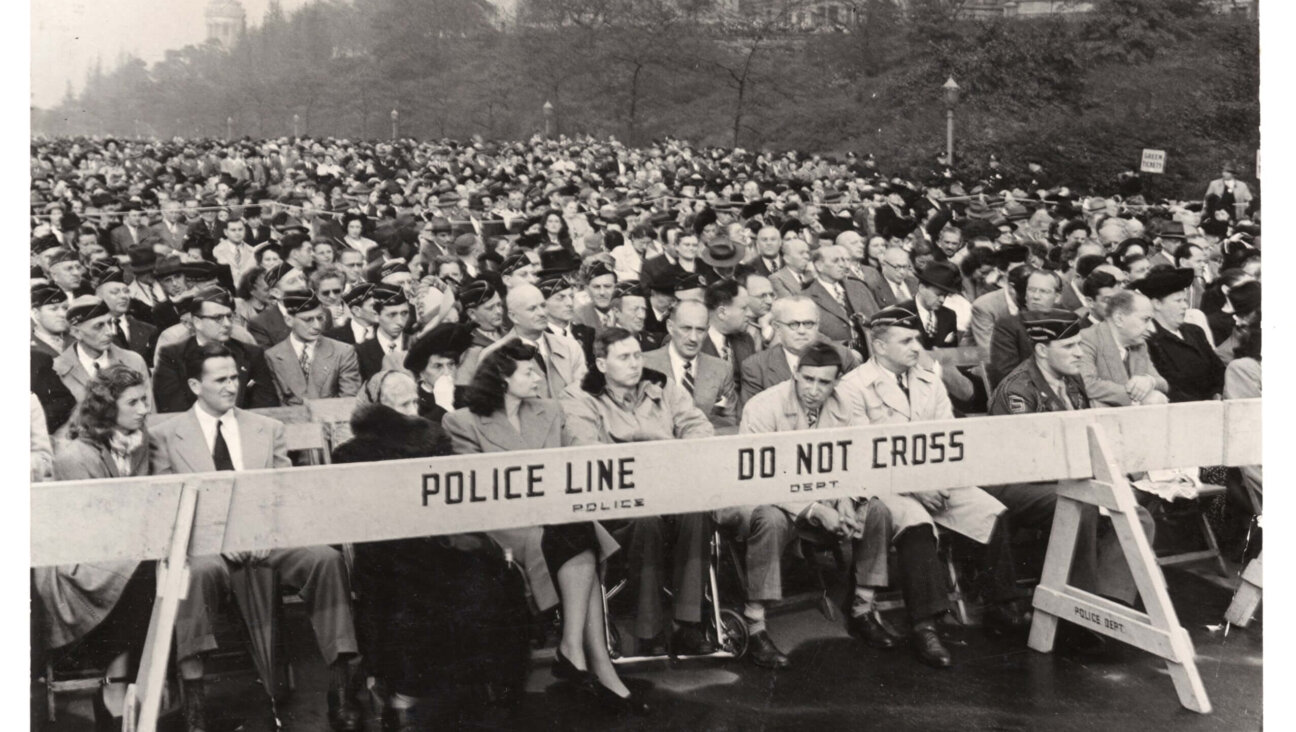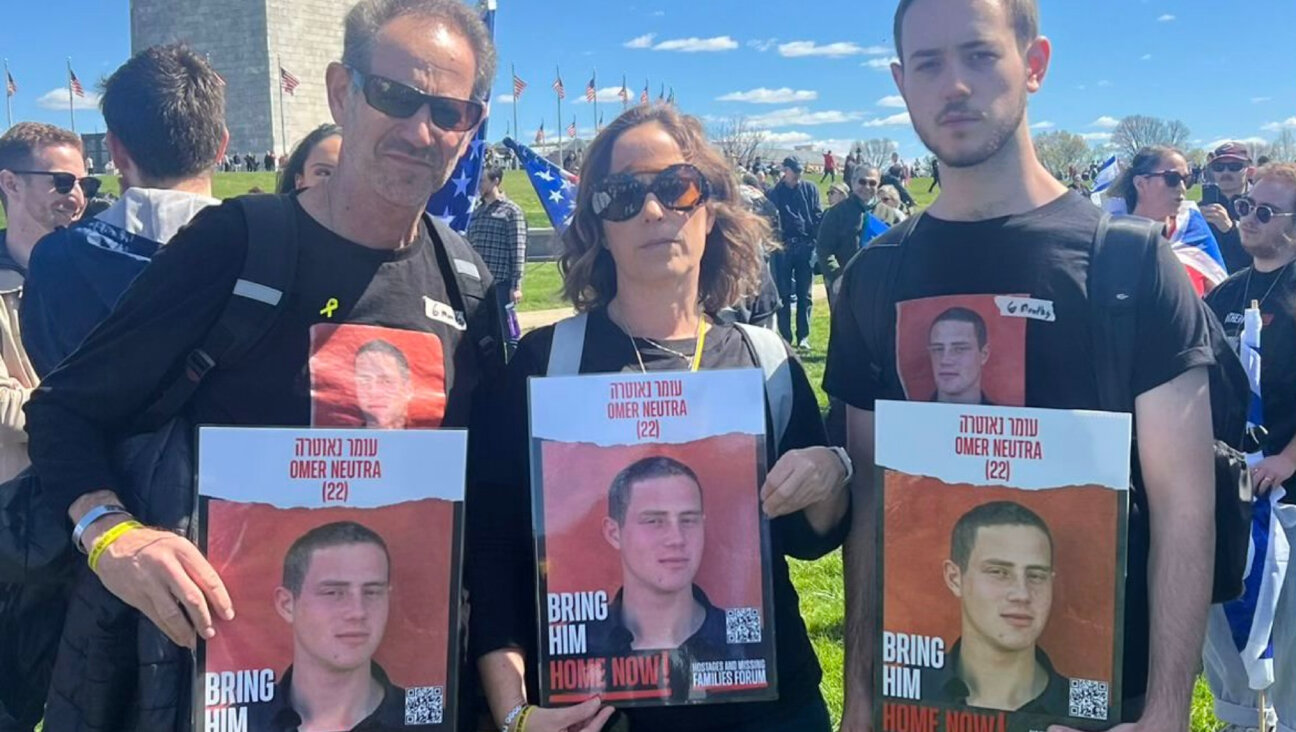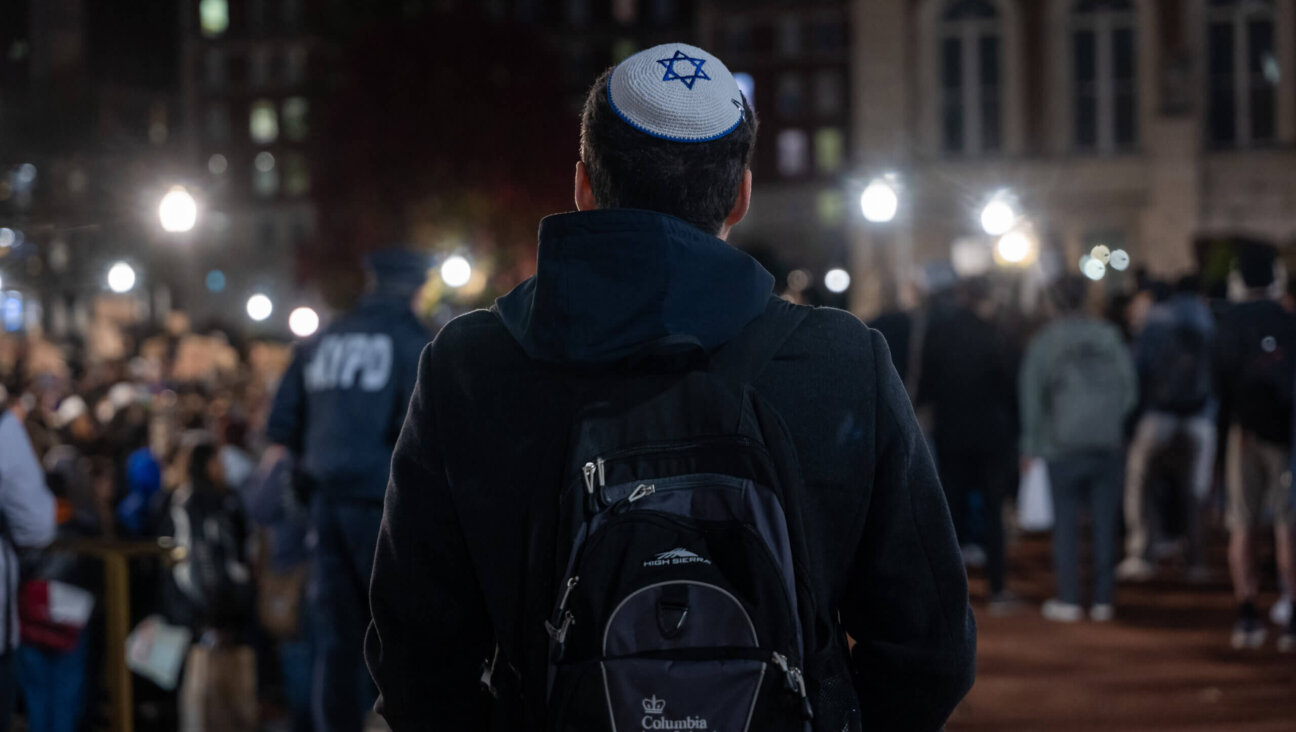They’re Building It, but Will They Come?
In a groundbreaking study released last spring, social scientists Steven M. Cohen and Ari Kelman reached a novel and, for some, startling conclusion: Far from being indifferent to Jewish cultural life, young unaffiliated Jews are actually quite interested in attending Jewish events — provided they are being offered outside the walls of Jewish venues. Young Jews, the two provocatively argued, are most comfortable being Jewish when surrounded by non-Jews.
The study has prompted some Jewish cultural programmers to rethink their outreach efforts, with many synagogues and Jewish community centers now looking to off-site bars and clubs in their quest to lure the young and unaffiliated.
One nascent institution, however, seems to have missed the memo. When it opens its doors in June 2008, San Francisco’s Contemporary Jewish Museum will have as one of its target audiences the very demographic that Cohen and Kelman describe. Indeed, in the Bay Area, with its deeply assimilated Jewish community, the cultural preferences of the young and unaffiliated can perhaps be applied to the Jewish community as a whole. And yet, here is an ambitious new institution loudly proclaiming its Jewishness while at the same time trying to cater to both ambivalent Jews and the museum-going public as a whole. A miscalculation? Maybe. Then again, perhaps the museum’s organizers have understood Cohen and Kelman’s message more completely than anyone else.
When Connie Wolf, the Contemporary Jewish Museum’s director, discusses the institution she’s building, her governing theme is novelty. “We’re taking the best of what’s out there,” she told the Forward,“and creating a new paradigm.” In Wolf’s telling, the CJM is doing nothing short of erecting a new species of Jewish institution.
The museum, she said, will be distinct on a number of counts. For one, it will be a museum without a permanent collection. “This,” Wolf said, “allows us to be more nimble and responsive.” The institution, Wolf stressed, will be alone among Jewish museums in having the word “contemporary” in its name. It will also be distinguished by its centrality. Unlike in New York, where the two Jewish museums are on Manhattan’s periphery — one uptown, one downtown — the CJM will be smack in the middle of the city’s cultural district, perfectly situated to draw in curious passersby.
But most distinctive of all will be the museum’s Daniel Libeskind-designed building. When the museum, which was founded in 1984, selected Libeskind to design its future home in 1998, the architect was not yet the superstar he is today. His Berlin Jewish Museum — now the most visited museum in all of Germany — was just being completed, and the Twin Towers still stood where the Freedom Tower will one day rise. But even by Libeskind’s standards, the San Francisco museum is unique. While it will bear the jagged edges that have become the architect’s trademark, the CJM, unlike the buildings for which he is best known, is not mournful in spirit. It is, quite literally, a celebration of life.
Libeskind’s overarching concept for the museum was a realization of the two letters — chet and yood — of the Hebrew word chai — life. The concept serves as an apt metaphorical counterpoint to the building’s site: a 1907 power station built in the aftermath of the city’s 1906 earthquake. The plant’s facade has been preserved as part of the museum’s design. “The Museum,” Libeskind wrote in an architect’s statement last month, “will make visible the relationship between the new and the old, innovation and tradition, celebrating the City’s past and reinvigorating it for the future. It will transform the physical energy associated with the legacy of the Power Substation to the power of human communication and imagination…. History does not come to an end but opens to the future; history is a dynamic ground.”
Interestingly, Libeskind’s language bears a striking resemblance to that of Cohen and Kelman, who, like the architect, see novel intersections of past and present, Jewish and non-Jewish, as the key to a dynamic Jewish future.
“From our interviews with Jewish young adults,” Cohen and Kelman wrote last year, “we learned how ‘engaged, but unaffiliated’ Jews seek cultural experiences that offer alternatives to an institutional world they see as bland, conformist, conservative and alien. Instead, they are drawn to events that promise to cross boundaries between Jews and non-Jews, Jews and Jews, Jewish space and non-Jewish space, and distinctively Jewish culture with putatively non-Jewish culture, effecting a ‘cultural hybridity.’”
But will Wolf’s and Libeskind’s visions of a bold new synthesis translate into a viable new institution? Some observers of the museum scene see reasons for optimism.
“What they are doing is very bold, very interesting,” said Barbara Kirshenblatt-Gimblett, a professor of performance studies at New York University who has written extensively on Jewish museums. “While others are running to clubs and hiding the fact that they are Jewish, [Wolf] wants to create an institution whose aesthetics are of such high quality, you don’t have to be embarrassed.”
For the museum to be able to draw a broad audience and succeed, Kirshenblatt-Gimblett said, its Jewishness has to be, in some sense, beside the point. “If it is a Whitney- or MoMA-class operation, it will stand regardless,” she said.
Arguing in a somewhat different vein, Kirshenblatt-Gimblett noted that if Libeskind’s building should become an architectural icon like Frank Gehry’s Guggenheim in Bilbao, the art that it houses may, in the end, not matter all that much.
“The key is to have a museum that you have to visit, even if you’re not interested in what they’re showing,” she said. “You don’t go to Bilbao to see contemporary art. No one asks, ‘What’s on at Bilbao?’ What’s on is the Gehry building.”
In a sense, the new synthesis the CJM is trying pull off has already been playing out, in microcosm, across town at the four-year-old Jewish Community Center of San Francisco.
Asked if the CJM’s vision of Jewish-themed programming for a general audience is workable, the JCC’s executive director, Sandee Blechman, offered an enthusiastic ‘yes.’
“We’ve been doing just that,” she said. “We’ve proven that a Jewish community organization can be both a vibrant hub of Jewish community life and be important to the community as a whole. And by being the latter, we can be even more successful as a Jewish organization.”
Gabriel Sanders is the Forward’s associate editor.

I hope you appreciated this article. Before you go, I’d like to ask you to please support the Forward’s award-winning journalism this Passover.
In this age of misinformation, our work is needed like never before. We report on the news that matters most to American Jews, driven by truth, not ideology.
At a time when newsrooms are closing or cutting back, the Forward has removed its paywall. That means for the first time in our 126-year history, Forward journalism is free to everyone, everywhere. With an ongoing war, rising antisemitism, and a flood of disinformation that may affect the upcoming election, we believe that free and open access to Jewish journalism is imperative.
Readers like you make it all possible. Right now, we’re in the middle of our Passover Pledge Drive and we need 500 people to step up and make a gift to sustain our trustworthy, independent journalism.
Make a gift of any size and become a Forward member today. You’ll support our mission to tell the American Jewish story fully and fairly.
— Rachel Fishman Feddersen, Publisher and CEO
Join our mission to tell the Jewish story fully and fairly.
Our Goal: 500 gifts during our Passover Pledge Drive!
























